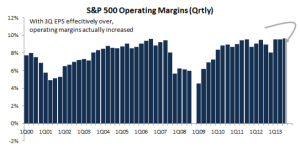I am posting below the Federal Reserve Bank of New York Statement Regarding Purchases of Treasury Securities and Agency Mortgage-Backed Securities:
On December 18, 2013, the Federal Open Market Committee (FOMC) directed the Open Market Trading Desk (the Desk) at the Federal Reserve Bank of New York to purchase additional agency mortgage-backed securities (MBS) at a pace of about $35 billion per month and longer-term Treasury securities at a pace of about $40 billion per month, beginning in January 2014. The existing December schedules for agency MBS purchases at a pace of $40 billion per month and Treasury securities purchases at a pace of $45 billion per month remain in effect until that time. The FOMC also directed the Desk to maintain its existing policies of reinvesting principal payments from the Federal Reserve’s holdings of agency debt and agency MBS in agency MBS and of rolling over maturing Treasury securities at auction. The Committee’s sizable and still-increasing holdings of longer-term securities should maintain downward pressure on longer-term interest rates, support mortgage markets, and help to make broader financial conditions more accommodative.
Purchases of agency MBS will continue to be concentrated in newly-issued agency MBS in the To-Be-Announced (TBA) market, and purchases of longer-term Treasury securities will continue to be distributed using the existing set of sectors and approximate weights. These purchase distributions could change if market conditions warrant.
The amount of agency MBS to be purchased each month and the tentative schedule of Treasury purchase operations for the following calendar month will continue to be announced on or around the last business day of each month. Additionally, the planned amount of purchases associated with reinvestments of principal payments on holdings of agency securities that are anticipated to take place over each monthly period will be announced on or around the eighth business day of the month.
Consistent with current practices, the purchases of agency MBS and Treasury securities will be conducted with the Federal Reserve’s eligible counterparties through a competitive bidding process and results will be published on the Federal Reserve Bank of New York’s website. The Desk will continue to publish transaction prices for individual operations at the end of each monthly period. All other purchase details remain the same at this time.
Additional information on the purchases of agency MBS and longer-term Treasury securities can be found in a set of Frequently Asked Questions for each asset class in the following locations:
FAQs: Agency MBS Purchases »
FAQs: Purchases of Longer-term Treasury Securities »


